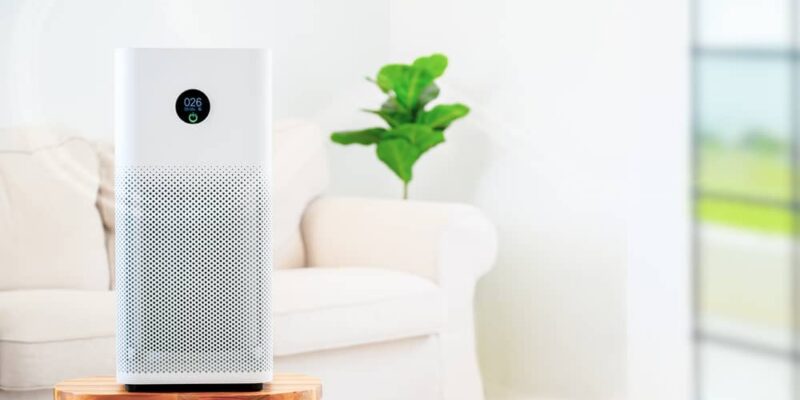Your home should serve as a safe sanctuary for you and your family. Unfortunately, when your home is filled with asthma and allergy triggers, it may affect your overall health. Although you can take prescribed medicines to fight your allergies, it’s essential to know how to keep your home allergy-free.

Luckily, there are many ways to allergy-proof your home. It’s wise to learn how allergies happen before deciding between an air scrubber vs air purifier.
What Causes Allergies?
If you’re allergic to something, your body considers it foreign and fights it off. Typically, the symptoms include:
- Stuffy or runny nose
- Watery, red, or itchy eyes
- Itchy nose or mouth
- Coughing
- Wheezing
- Sneezing
- Shortness of breath
Antibodies release some chemicals into your blood to protect your body. Often, your body’s tendency to develop allergies is hereditary. It means your parents may pass it down to you through genes. Unfortunately, it isn’t always the case, as some people may have allergies even if they have no family members allergic to something.
The following are some common allergens or irritants that may cause your allergies:
- Molds: These fungi thrive in moist and warm environments. In the outdoors, molds can be found in spots with poor drainage. When indoors, mold may thrive in poorly ventilated and dark areas, including a basement or a bathroom.
- Pollen: Weeds, trees, and grasses release small particles into the air for plant fertilization.
- Dust Mites: These feed on dead skin cells, which may fall off your body.
- Pets: Allergens from pets are due to pet saliva and dander, so once animals lick themselves, the saliva may get on their person. When it dries, the particles may settle into the fabrics.
Best Tips To Ensure An Allergy-Free Home
If you’re suffering from allergies, it’s crucial to improve your indoor air quality and stay on top of your household chores to ensure that your home is allergy-free.
Below are the ways to allergy-proof your house:
- Change Your Air Filters Regularly
Never forget to check and change the filters if your house has a central air conditioning system. Over time, air filters become clogged with dander, dust, and debris.
If your filters are dirty, they can worsen or cause more allergens to spread. To maintain and clean your air filters properly, follow the manufacturer’s instructions about the frequency and timing of professional service.
- Control Humidity
Another way to keep an allergy-free home is to control your humidity level. When your house is too humid, it may increase allergens and promote mold growth. On the contrary, if the air is arid, it may aggravate allergies.
As a solution, you can place a dehumidifier in damp areas, like a basement. For dryer areas, you can get humidifiers. If you’re unsure about the best methods to control humidity, you can consult a professional to help you determine the right solution to ensure an allergy-free home.
- Clean Your House Thoroughly
Each time you clean your carpet or eliminate clutter, you keep the allergens from spreading. It ensures that pet dander, pollen, and dust don’t build up.
You may use vacuum cleaners with high-efficiency particulate air (HEPA) filters. These filters force particles through trapping pet dander, small mesh, pollen, and some allergens. Clear clutter and knick-knacks in your home because such items are dust magnets.
- Wash Your Linens Properly
Your bedding must be washed using hot water. To kill the dust mites effectively, you should wash your linens in hot dryer settings.
If you can’t wash your bedding at hot temperatures, you may also put them in your freezer overnight. The items need to go in the dryer on high heat for at least 15 minutes. Other than dust mites, you would want to wash linens to eliminate allergens that might accumulate, such as outdoor allergens and pet dander.
- Create Pet-Free Areas In Your House
If you have furry family members, one of the ways to alleviate allergies is to make pet-free areas in your home. Your child’s room must be one of them, but if possible, create another place where your kids can play that is sure to be free of allergens made by pets.
You must also wash your pets and their bedding weekly. In addition, keep the litter trays outside. It doesn’t only apply to dogs and cats. Pet dander may be found in guinea pigs, rabbits, hamsters, and other furry critters that your children may love.
- Detox Your House
The air indoors is as polluted as the air outdoors. The increasing carbon dioxide levels and climate change have made an environment that makes it hospitable for mold growth, a primary trigger for allergies.
Before dealing with allergens from your home, you have to detox your house. Throw everything you no longer use and clean your living space to ensure a clean and dust-free environment. Make sure to wipe the surfaces with a damp cloth instead of dry dusting, which may brush dust back in the air, causing allergies to spread.
Conclusion
Allergy is a natural part of life for many people. Whether you’re allergic to pollen particles or food, understanding how allergies happen and keeping the above tips in mind can help you transform and keep your home allergy-free.





